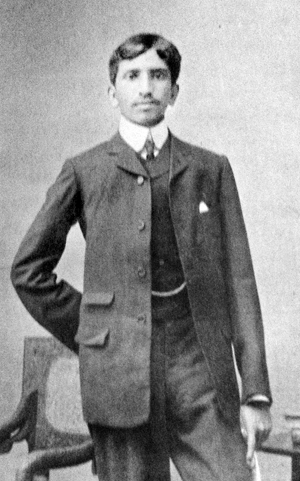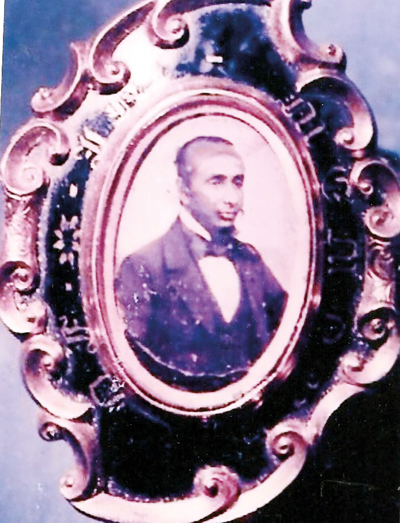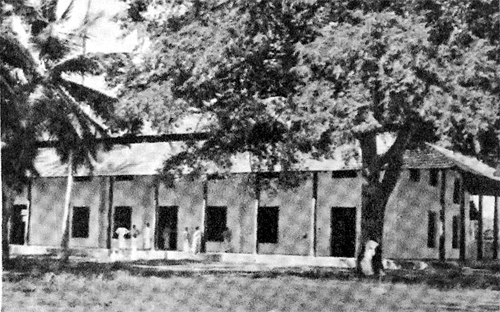Looking back through the ‘lens’ of time
 The exact date and location of the landfall of the daguerreotype process in Sri Lanka is still a matter of dispute. Three possible destinations, which can vie for this distinction are Colombo, Kandy and Jaffna.
The exact date and location of the landfall of the daguerreotype process in Sri Lanka is still a matter of dispute. Three possible destinations, which can vie for this distinction are Colombo, Kandy and Jaffna.In 1843, four years after its discovery was announced in Paris in 1839, several firms and individuals were advertising the Daguerreotype process in Colombo. Notices were placed in the public press both in The Colombo Observer and The Ceylon Times. Portraiture was a genre, the mainstay of the Daguerreotype process and prices ranged from as high as £4-£10.
A particularly serious problem with daguerreotypes in Colombo and coastal towns was the deterioration of the images on the plate, due to the salt -laden air and high humidity. This drawback was highlighted in a journal Young Ceylon (1850) devoted to the Arts.
Six years ago a Mr. Barrow established himself in Colombo and Kandy as a DAGURREO TYPE ARTIST and many persons had their likeness taken by him, which cost them £4-£10 each- but in a short time almost every one of them became defaced and obscure, and are laid aside of no use.
The undersigned had qualified him and restored many of them to their original state, so to continue-for the small fee of 7s.6d.for small and plain ones and 10s. For the larger with ornamental background-for more than two belonging to a family an allowance will be made.
Apply to Mr. Phebuse’s shop Braille Street, Fort where the undersigned will be found on Mondays and Thursdays where Portraits may be left with the address of the owner.
John Vanderstraaten. Jnr
But there is no evidence of their practice being continued either by the signatory John Vanderstraaten Jnr or the daguerreotypist Barrow.

Earliest known example of a coloured, tinted Daguerreotype
Over the years 1850-60, the daguerreotype process spawned a lively side- trade countrywide and in the urban centres. Often the daguerreotype portraits were mounted in a protective frame, usually in silver and surmounted under a glass or crystal. Some were highly decorative and incorporated all manner of designs- forming pendants, brooches, earrings and bracelets-and a variety of ornaments, and often tinted by dusting finely coloured pigments on the surface of the plate.
One of the enigmatic figures in this medium was James Parting (c.1844-1860) who advertised himself as a Daguerreotypist and Watchmaker. He is listed in the Ceylon Almanac and Compendium of Useful Information from 1850 to 1854. Parting’s contribution to photography rests on a single assignment. The Ceylon Observer newspaper commissioned him to document the cutting of the first sod of the Railway close to the present Malgahakanda Station, an event of great historic importance. He was, though only partly successful – an engraving of his daguerreotype image appeared in the London Illustrated News (October 9, 1858).
Notices of the daguerreotype process appeared concurrently in Kandy– with its cooler climate, and lesser humid condition it was considered more ideal than Colombo to set up a studio.
Although Galle, the main port of call for imports and shipping was also a possible contender for the early establishment of the daguerreotype process, no records of this practice have come to light.
By the 1850s the new advances from the development of photography spawned the stereoscopic views, which enabled armchair travellers to gaze on remote sites of towns, villages, archaelogical sites and landscapes of distant countries -all from the comfort of their living rooms.
Jaffna and the discovery and use of the Daguerreotype and Calotype process 1840-1860
In the development of photography, although Jaffna seemed isolated both in its geographic location and lack of connectivity, on the contrary there is sufficient evidence that daguerreotype photography was practised in Jaffna, with the encouragement of the American Christian Mission (ACM). This is borne out by the articles by Swaminathan Kandiah Lawton (1851-1919) and Henry Martyn (1812-1861), both prolific commercial photographers active during that period.
In an article, published in the Penrose Pictorial Annual in 1912-13, titled “When was photography introduced into the East?’ Lawton describes in detail how by chance he unearthed, a camera, and other equipment and materials related to the daguerreo process in a rubbish dump at the headquarters of the ACM at Vadukottai, Jaffna. Lawton’s discovery throws an interesting light on the early use of the daguerreotype in Jaffna:
“Here I found many years ago, during my early days of photographic study, a complete set of Daguerreotype apparatus as described in a scientific journal of 1839, with polishing machines, appurtenances of vaporizing with iodine and mercury, and some polished metallic silver -surfaced plates.
“The date of the importation of this set I could not have ascertained, but as it retained the hinged front door of the dark slide, operated by semi-circular handles from the back, which was very soon improved upon by the substitution of the sliding shutter, it should have been made by 1840 or so. Certain it is that Daguerreotype process was demonstrated to the students in the early forties, for one of them a Tamil of great scientific attainments had opened a studio in Main Street of Jaffna and supplied photographs by the Daguerreotype process.”
![Lawton-Swaminathan-Kandiah[1851-1921]](http://www.sundaytimes.lk/180902/uploads/Lawton-Swaminathan-Kandiah1851-1921.jpg)
Portrait of Swaminathan Kandiah Lawton (1851-1921) and (top right) his son K.R. Lawton
The Tamil of great attainment Lawton refers to, can be certainly identified as Henry Martyn who had a thorough knowledge of mathematics and chemistry and was equipped with a mind to cope with technical issues.
Martyn first enrolled as a student at the Vadukottai School and later as a seminary teacher between 1832-1843. When in 1853 the dagurreotype process, camera, chemicals and material were offered to Martyn, by the official of the American Christian Mission College at the Ottley Hall Vadukottai (spelt originally as Batticota) he disentangled the process within a few hours. To record this historic event Martyn managed to take a group portrait image of the students and teachers attending this meeting.
J.H. Martyn (a descendent of Henry Martyn) in a reference in a fascinating historical account Notes on Jaffna [1923], also recounted this incident:
“The American Missionaries were the first to introduce the photographic art to Ceylon. They obtained the necessary apparatus, chemicals and printed directions in 1853, and made a number of trials which were unsuccessful. It was then suggested to them by an admirer that he should be given an opportunity. To try his hand in the new art, accordingly Martyn was invited to a meeting of Batticota Church. On his arrival, the Senior Missionary, the Revd. F.P.Hastings entrusted the photographic apparatus to him”.
Inspired, Martyn went on to assemble the necessary equipment, and materials to establish his own studio in Jaffna town.
The other significant personality in the development of early photography in Jaffna was Swaminathan Kandiah Lawton (1851-1921). Born in 1851, in Manipay, Jaffna, unlike Martyn, Lawton represented the third generation of Tamil students who enlisted at the Vadukottai institution. He came under the influence of Reverend Dr. Eurotas Parmelee Hastings (1821-1890), who was one of the leading educationists of the American Christian Mission. Arriving in Ceylon in 1846, Rev. Hastings served here in various stations established by the American Mission in Jaffna till his death in 1890.
Hastings returned to America in 1852-53 and again in 1869-72 and would have brought back with him the necessary cameras, chemicals, material and the technical information, of the daguerreotype process from the U.S where these were freely available.
Lawton recalled in an article how as a student aged 15, on a visit to Kandy, he was shown an image of a photograph on a glass support. Although lacking professional advice he sourced the only published material available to him in a journal The Photographic News.
Both the current photographic processes Daguerreotype and Calotype were all set in great detail. The greatest setback for Lawton was the lack of photographic equipment and materials, which one took for granted in Europe.

Where it all happened: Ottley Hall of the-American Christian Mission Vadukottai, Jaffna
Being a self-trained photographer he substituted the materials available to him. Lawton even suggested that one should manufacture their own camera and he employed craftsmen in his village to achieve this aim.
Unfailingly Lawton took care to publish the results of many such experiments in the prestigious Penrose Pictorial Annual. Over the years from early 1896 – 1914, he contributed as many as eight articles- probably the only photographer from this country to do so regularly, and in such detail.
But as a self -trained photographer he was adept in working in the Wet and Dry Collodion method, which later superseded the daguerreotype and calotype techniques. But whether Lawton himself had undergone training to acquire the skill of a daguerreotypist is unclear from his writing. Lawton later went on to set up a commercial studio, one of the most well known and probably the longest running firm [1870-1910] of its type in the Jaffna Peninsula.
By the turn of the century, his studio was still operating with photographic techniques, which had long been superseded. In 1903, the then President of the Amateur Photographic Society Justice H.L. Wendt (Lionel Wendt’s father) sought out Lawton, in his studio in Manipay, Jaffna. Wendt made this gruelling 250 mile trek over several days, before the advent of the Railway and motorised transport, in order to observe the obsolete technique still in use in Lawton’s studio and to verify the result had his portrait taken by him.
The commercial practice, which Lawton established, served the citizens of Jaffna for almost half a century, till his death in 1921. His son K.R. Lawton followed in his father’s footsteps and was equally inventive and produced excellent results in his work.
Often photographic historians tend to confuse Swaminathan Kandiah Lawton with his namesake Joseph Lawton (c1864-d.1872), the English photographer who was also practising over the same period in Kandy. Joseph Lawton was widely known for the documentation of the archaeological sites of Anuradhapura, Polonnaruwa, and Sigiriya, producing the earliest known images of them.
( The writer acknowledges with thanks the efforts of Mark Edward Balmforth, Fulbright Scholar in sourcing much of the Lawton material from the Penrose Pictorial Annual 1898-1910)
| They came from far and wide (1845-1858) | |
| The swift dispersal worldwide of both the Daguerreotype process and Fox Talbot’s Calotype process was a truly remarkable phenomenon.Travel by sea and land was a laboriously slow process. A voyage to Calcutta or Colombo around the Cape, could take several weeks and direct communication such as telegraph and telephone were still years away. In spite of all these drawbacks as early as October 1839, William O’ Shaughnessy reported his experiments with the new “photogenic drawings” at a meeting of the Asiatic Society in Calcutta. Daguerre’s discovery in India provoked three long articles on the subject in the Bombay Times in December the same year and cameras were available from Thacker, Spinks & Company, Calcutta in 1840. In the decade between 1845-1855 there was an invasion of visiting amateurs and professional photographers from Europe to Ceylon. Jules Itier (1802-1877) One of the first recorded foreign daguerreotypists to visit Ceylon was Jules Itier. On his return as the leader of the French Government’s Trade delegation to China from 1843 until March 1846, Itier visited Macao, Vietnam, Singapore and Ceylon. By September 19, 1845 Itier disembarked at Galle on board the Lady Wood arriving from Singapore and spent over a month travelling to Colombo, Kandy and Nuwara Eliya. He left Galle on the steamer Hindustan heading for Egypt. Unfortunately, all we are left with is a hazy view of Galle harbour. Alexis de La Grange (1829-1917) Frenchman Alexis de La Grange, embarked in 1849 upon a two-year trip to India,Ceylon, Java, Malaysia and Singapore. He travelled with his statesman cousin, Felix Lambrecht, who published Souvenirs in 1873, and it is believed that some of the images taken in Ceylon in 1848-49 by de La Grange were reproduced, as engravings in the work. Frederick Fiebig (1801-1880.c.) The German-born Frederick Fiebig was probably the most enigmatic of photographers. Fiebig was multi-talented – had multiple vocations and was a jack-of-all-trades — a pianist, conductor, Freemason activist, artist, engraver, lithographer, and photographer. This meant that references to him would turn up in Calcutta, Chennai, Macao, Hong Kong, Singapore, Ceylon, Cape Town and Mauritius and he even visited China and Myanmar. Fiebig arrived in Ceylon in the Steamer Oriental, in 1852. Among the passengers on board the Oriental was Lady Dalhousie, wife of the Viceroy of India who had been prescribed a period of convalescence in Nuwara Eliya. Of the 400 or more images from Fiebig’s collection of photographs purchased by the British East India Company, London, in 1856, almost 70 represent the first recorded hand coloured Calotype photographs and were the earliest views of the newly emerging urban centres of Colombo, Kandy and Galle. Eliphalet M.Brown.Jr (1816-1886) New York-born Eliphalet M. Brown Jnr. was an accomplished daguerreotypist, lithographer and artist (historical, portrait and marine themes) practising at his studio in New York. In 1852 Brown was personally handpicked as the daguerreotypist to accompany Commodore Perry’s expedition to Japan in 1852-53. Brown’s skills both as an artist and daguerreotypist proved invaluable to Perry for the expedition he was undertaking. Brown reportedly took more than 400 photographic images during the two-year expedition. Several of the lithographed plates of the Government published Narrative of the Expedition are attributed directly to Brown’s daguerreotypes. But we can only attribute to him the four engravings of Galle that are inscribed with his name. Hermann and Robert Schlaginweit The German born Schlaginweit brothers Hermann (1826-1882) and Robert (1833-1885) visited India and travelled south to Ceylon during the years 1854-57. Of these images the ‘Wolvendahl Church in Colombo’ in 1857 probably best illustrates the effort of Robert Schlaginweit. Many of the surviving images included the so-called portraits of indigenous people (“native types”) which are norms of nineteenth century photography. Baron Hermann von Konigsbrunn A distinguished landscape painter who spent eight months in Ceylon from January 8, 1853, he took as many as 200 photographs and left on November 1854 for Austria. The expedition included Franz Ritter von Friedman and Karl von Schrmarda (1819-1908), Professor at the University of Graz. This is in no way the end of the story of the introduction of the Daguerreo and Calotype processes in Ceylon. The history of photography witnessed the arrival of some of the greatest names in 19th century photography. The list includes: John Thomson (1837-1921) first to document thoroughly archaeological sites of China and Cambodia; Samuel Bourne (1834-1912), the pictorial- photographer of the Himalayas; Julia Margaret Cameron, eminent British portraitist; William Henry Jackson (1843-1942), first to capture the American wilderness; Felice Beato (18320-1909), the first war –photographer and more recently Henry Cartier Bresson (1908-2004). Many were visitors but others like Cameron were long-term residents. |


